Matthew Rolston: Talking Heads is a photographic project comprised of color portraits of a rare collection of ventriloquism dummies.
Description
By Diane Rosenstein
The exhibition and book Talking Heads: The Vent Haven Portraits by photographer and artist Matthew Rolston is comprised of color ‘portraits’ of dummies chosen from a collection of nearly seven hundred ventriloquist dolls (dating from 1820 – 1980) housed at the Vent Haven Museum in Fort Mitchell, Kentucky. Rolston set up a portrait studio at the museum and photographed each of his subjects in an identical manner: square format, low angle, monochromatic backdrop, and a single light source. The resulting photographs are grounded in a visual vocabulary articulated by Irving Penn, Richard Avedon, and Andy Warhol, among others; they also invoke the classic tropes of Pygmalian: energize the inanimate, and in so doing, infuse them with an idiosyncratic and expressive meaning. The photographer argues on behalf of our collective humanity, and he offers the gaze of these portraits as an avenue of connection.
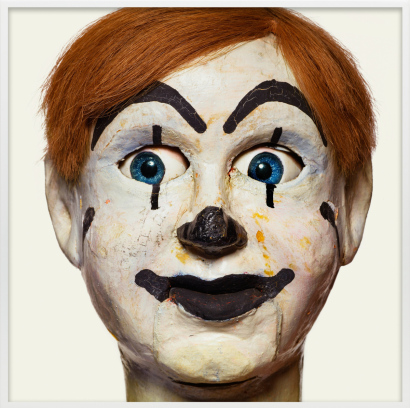
Matthew Rolston, Anonyma Boy, from the series “Talking Heads.”
The Talking Heads exhibition presents larger-than-life prints measuring sixty inches square, including Anonyma Boy, who bears an unmistakable resemblance (though unintended by the artist) to Avedon’s 1969 portrait of Andy Warhol. An edited series of smaller-scale prints includes Pancho, a hazel-eyed Everyman who regards us with the weariness and candor of a performer who has spent his life on the road.
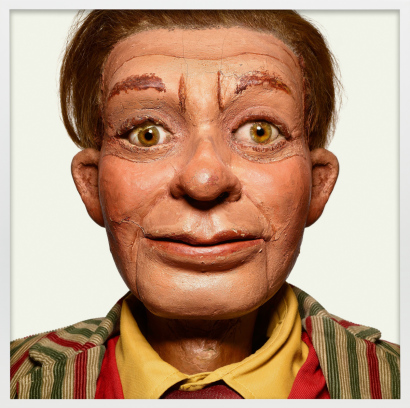
Matthew Rolston, Pancho, from the series “Talking Heads.”
Noisy Crachini is the bejeweled centerpiece of a monumental triptych that depicts a high society trio: the gentlemen are cosmopolitan swells, wearing white ties and top hats, but their poignant expressions bring into question the true nature of this curious ménage.
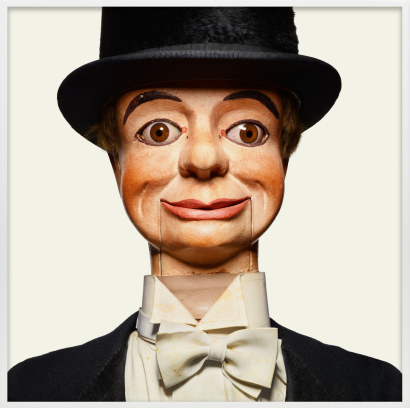
Matthew Rolston, Skinny Hamilton, from the series “Talking Heads.”
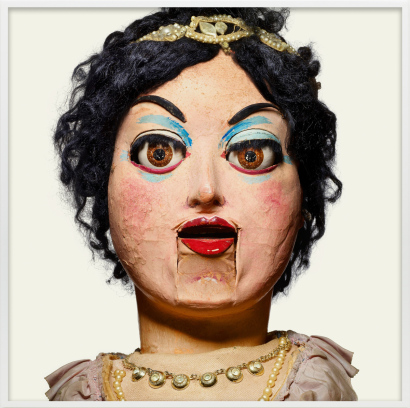
Matthew Rolston, Noisy Crachini, from the series “Talking Heads.”
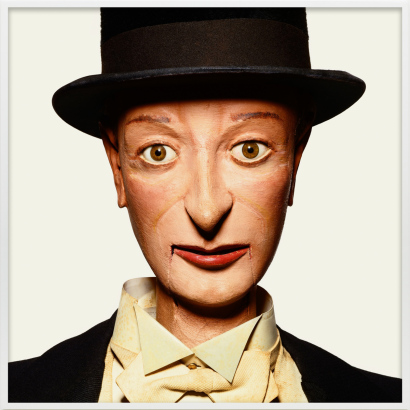
Matthew Rolston, Señor Wences, from the series “Talking Heads.”
The depiction of masks, dolls, dummies, and mannequins is an enduring subject of immense art historical significance. Matthew Rolston’s Talking Heads continue a diverse art-making tradition, from ancient Egyptian Fayum panel paintings in the Greco-Roman era, to Roman busts and plaster death masks, and on to sculptures by Charles Ray, Robert Gober and Paul McCarthy. Recently, contemporary artists have elevated the practice of re-photographing sculptural figures, and Mr. Rolston’s Vent Haven portraits engage in a dialogue with Hiroshi Sugimoto’s Portraits series (such as Henry VIII, 1999) as well as Cindy Sherman’s Sex Pictures series (1992), though from a substantially different ideological context.
In the late 1970s, while still at student in photography at Pasadena’s Art Center College of Design, Rolston was hired by Andy Warhol to make portraits for Interview magazine. At the time, Mr. Warhol was painting a series of square portraits of celebrities and members of the social elite. Upon reflection, Rolston states that his Talking Heads are a tribute to his mentor: they pay homage to Warhol’s composition and vivid coloration; his unconventional “Superstars”; and especially, his affection for American craft and folk art.
